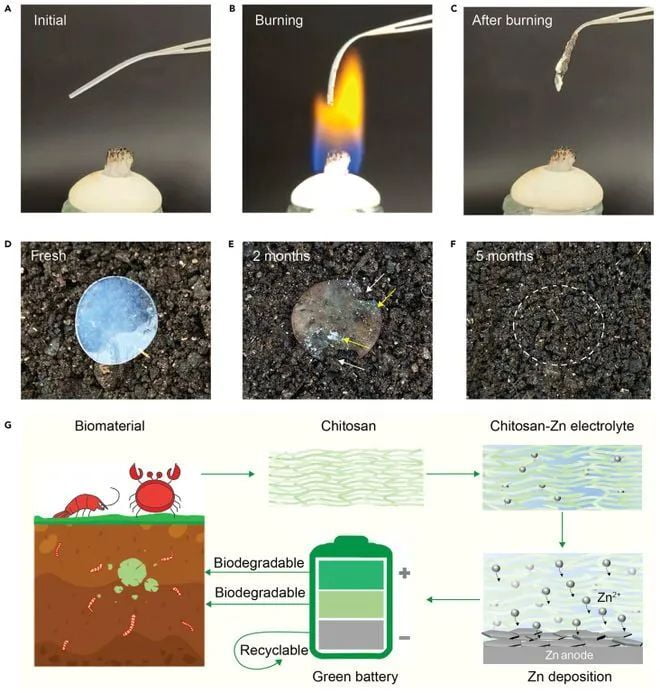The increasing demand for renewable energy and electric vehicles has triggered a high demand for energy storage batteries, but the batteries behind supporting these sustainable solutions are not always sustainable. In a paper published Sept. 1 in the journal Matter, U.S. scientists have created a zinc battery containing a biodegradable electrolyte from an unexpected material, crab shells.
The production and consumption of large numbers of batteries adds to the environmental burden, said Liangbing Hu, director of the University of Maryland's Center for Materials Innovation. For example, polypropylene and polycarbonate diaphragms, which are widely used in lithium-ion batteries, take hundreds or thousands of years to degrade.
The cell allows ions to travel back and forth between positively and negatively charged terminals through an electrolyte. The electrolyte can be a liquid, a paste or a gel. While many batteries use flammable or corrosive chemicals, the newly developed battery uses a biomaterial called chitosan to make a gel electrolyte that can store electricity from large-scale wind and solar power.

Safety, biodegradability and sustainability of chitosan-zinc electrolytes
Chitosan is a derivative of chitin, notes Liangbing Hu. Chitin has many sources, including cell walls of fungi, exoskeletons of crustaceans and squid rings. The richest source of chitosan is the exoskeletons of crustaceans, including crabs, shrimp and lobsters, which are readily available from seafood waste.
The biodegradable electrolyte means that about 2/3 of the battery can be broken down by microorganisms, and the chitosan electrolyte can be completely broken down within 5 months. The new batteries degrade leaving only the zinc metal component, not lead or lithium. Zinc is more abundant in the earth's crust than lithium, and mature zinc batteries are cheaper and safer.
This zinc chitosan battery has an energy efficiency of 99.7% after 1000 battery cycles, making it a viable option for storing wind and solar energy conversion for transmission to the grid.

